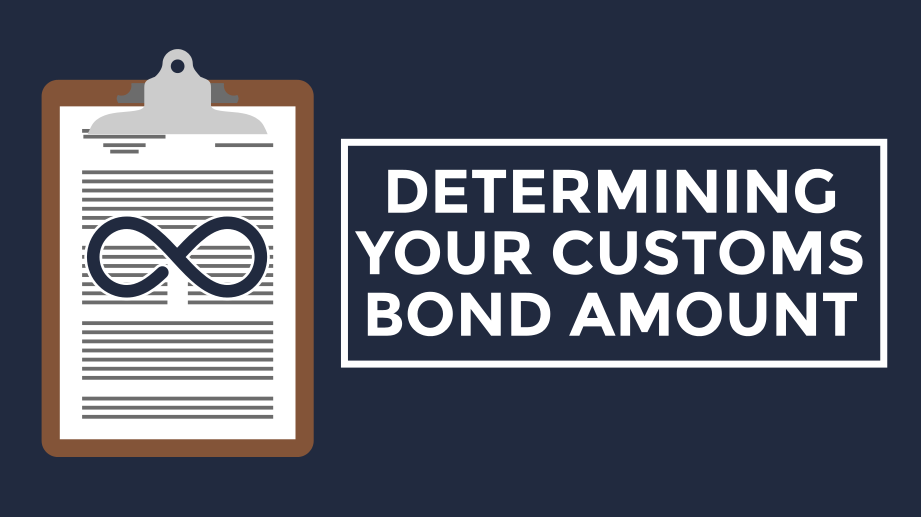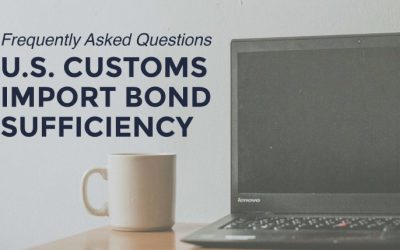In a short educational video, Trade Risk Guaranty explains how to calculate your U.S. Customs Bond Size.
After learning the basics of Customs Bonds in our educational videos explaining ‘What is a Customs Import Bond?’ and ‘the difference between a Single Entry and Continuous Bond’, it is time to expand on that topic and learn how to determine your U.S. Customs Bond Size.
To get started on this topic, Trade Risk Guaranty put together a brief educational video answering the following questions:
- What is Bond Amount?
- How to Calculate Customs Bond Size for a Single Entry Bond?
- How to Calculate Customs Bond Size for a Continuous Customs Bond?
Before diving directly into the video, let’s start with a general understanding of these two ways of calculating the bond amount for a U.S. Customs Bonds.
What is Bond Amount?
The bond amount is also known as the ‘Penal Sum’ of the bond and it refers to the maximum compensation a surety bond provides in cases where the bonded entity doesn’t meet its contractual obligations towards someone else (known as the Obligee). In the case of a U.S. Customs Bond:
- Bonded Entity = the Importer of Record
- Someone Else/Obligee = Customs and Border Protection
Since the penal sum of the bond is determined by the obligee and the type of surety bond, the minimum amount an importing business must be bonded is determined by U.S. Customs and Border Protection.
How to Calculate Customs Bond Size for a Single Entry Bond?
When determining the size of a single transaction bond for your company, the bond must be no less than the total entered value of the goods plus all duties, taxes, and fees. A single Transaction Bond must be written at a minimum of $100, but the size can ultimately be set by the port director. So, for example, if you are importing goods subject to a Partner Governing Agency, the bond may be required to be 3 times the total entered value.
Since the bond amount for a Single Transaction Bond is determined by the value of the goods being entered, every entry made would be calculated based on its individual value and every entry would need its own Single Entry Bond.
How to Calculate Customs Bond Size for a Continuous Customs Bond?
Continuous Customs bonds are calculated differently; rather than being based on the total value of the goods, a continuous bond is based on the total duties, taxes, and fees you pay annually. So, let’s look at the formula. To start with, we take the total duties, taxes, and fees you pay annually and multiply it by 10%. Now we take that amount and round it up to the nearest 10,000 to get the bond amount for your company.
Since Continuous Customs Bonds are written based on a company’s total annual duties, taxes, and fees; the importer is able to bring in an unlimited amount of entries under that bond over the course of the year. Therefore, a continuous Customs bond is a superior option that typically ends up having a significant cost-savings for a company that imports two or more times in a year.
Learn How to Determine Your U.S. Customs Bond Size
Watch the following video to learn how to determine the bond amount for your U.S. Customs Bond whether you have a Single Entry Bond or a Continuous Customs Bond.
Did you like that video? Check out the other videos in the series; What is the Difference Between Single Entry and Continuous Customs Bonds? and What is a U.S. Customs Import Bond?.
subscribe to Trade Risk Guaranty’s YouTube Channel!
Purchasing Your U.S. Customs Bond From Trade Risk Guaranty
Here at Trade Risk Guaranty, we specialize in providing U.S. Customs Bonds directly to importers instead of through a third-party such as Customs Broker or Freight Forwarder. When purchasing a bond with TRG, you are able to continue working with your Customs Broker and/or Freight Forwarder as usual while saving money and having more control over your U.S. Customs Bond.
Trade Risk Guaranty is known for unprecedented pricing, exceptional assistance, and remarkable results. In order to provide the best pricing and options for our customers, we only provide continuous Customs Bonds but offer multiple-year pricing options so that you can lock in the best price for your company. Find your company’s Customs Bond information today to get started on a quote.





![[Webinar] How Could Changes to De Minimis Impact Your Company?](https://traderiskguaranty.com/trgpeak/wp-content/uploads/2025/05/trg-how-de-minimis-impacts-customs-bond-webinar-400x250.png)

